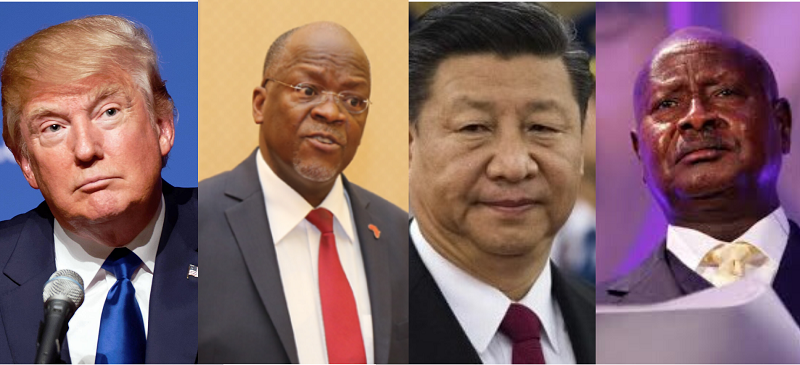“Retail giants to tap the promising Indian market”
November 12th, 2012 Controversy over Foreign Direct Investment in India’s retail market has raised a political storm, but Tabish Azeem, 22, a Commonwealth Correspondent from Gaya, India, argues it’s a positive step that will provide needed jobs and increase desperately low farm income while offering consumers new options.
Controversy over Foreign Direct Investment in India’s retail market has raised a political storm, but Tabish Azeem, 22, a Commonwealth Correspondent from Gaya, India, argues it’s a positive step that will provide needed jobs and increase desperately low farm income while offering consumers new options.
When India’s economist Prime Minister Dr. Manmohan Singh announced the government’s decision to allow Foreign Direct Investment of up to 51% in the multi-brand retail sector, a storm erupted in the country’s political sphere.
This policy liberalisation paves the way for global retail giants to tap the promising Indian market. At the same time the decision earned political hostility from the left, right and centre.
Still, the protests have been more pretentious than genuine. The central government allows state governments to decide whether they want investment in areas under their governance.
Political debate in India has always been driven by rhetoric more than by substance. In the late 1980s the introduction of computers was met with wide political opposition. The irony today is that the computer software industry is driving the Indian economy, and universities across the country produce hundreds of thousands of software engineer every year!
Cynics argue, what difference will the FDI in retail bring to the Indian scene?
While the FDI in multi-brand retail shall be no panacea to the problems endemic to the country, there’s no denying that it will help provide meaningful employment to thousands. It will open the door to better produce prices for farmers and offer more options for consumers.
Firms like Wal-Mart are pioneers in supply chain management. Their entry into Indian markets would not only streamline the farm-to-fork supply chain for millions, but also give first hand exposure to a smoothly-operating supply chain that could inspire more ideas for better management of rural markets in India.
In a country where almost 3000 children die every day from illness related to malnutrition and many more die of starvation, it is indeed deplorable that thousands of tonnes of grains are left to rot in government storehouses. Farmer suicide rates are extremely high, estimated at 270,000 between 1995 and 2011. Falling margins and subsequent debt is the prime cause of these desperate suicides.
A proper supply chain network, backed by FDI, could help get food to consumers and revenue to farmers.
Without that supply chain, farmers fetch meagre prices for their produce and the major chunk of profit is taken away by the middle men. Hoarding and black marketing are commonly employed malpractices that further increase the chasm between rates at which farmers sell goods and those at which consumers buy them.
The road ahead is not easy. Firms will face a major hurdle in sourcing produce from Indian farmers, most of them working on a very small scale. While an average farm size in U.S.A. is 418 acres, in India it’s merely 3.3 acres! Sourcing from such small operations can be quite difficult. Nevertheless, it can open the window for major revamps in the Indian agriculture sector.
Practices like co-operative agriculture can be promoted, which would result in higher production per hectare and ease the sourcing issue. Co-operative agriculture, where farmers pool their agricultural resources and equipment, has already been very successful in India’s milk sector. Operation Flood or the White Revolution turned India, a milk-deficient nation, into the world’s largest milk producer, surpassing the U.S.A. in 1998.
The political class might oppose the FDI and allied liberalisation measures, but the business leaders of the country applaud the string of reforms.
“The decision will enhance the image of India amidst foreign investors and will signal that India is on the move again,” says Ratan Tata, chairman of the $100-billion TATA conglomerate.
With the decision to allow FDI, the troubled Indian economy can expect a boost from the influx of several billion dollars worth of investment. The stock markets and valuation of the Rupee have already risen in the wake of the government’s move, and hopes are high that India will soon be back on the trajectory of strong economic growth.
Photo: courtesy of Bombay Addict
…………………………………………………………………………………………………………………………………………………………
About me:
I am an undergraduate senior in Chemical Engineering at the National Institute of Technology, India. I keenly observe almost everything that makes news, and follow political and economic affairs very closely.
I have pursued a research internship at the prestigious Indian Institute of Management, where I worked upon the education sector; a field close to my heart. Apart from being a social media enthusiast, reading and quizzing count among my hobbies and writing is my passion!
………………………………………………………………………………………………………………
Opinions expressed in this article are those of the author and do not necessarily represent the views of the Commonwealth Youth Programme. Articles are published in a spirit of dialogue, respect and understanding. If you disagree, why not submit a response?
To learn more about becoming a Commonwealth Correspondent please visit: http://www.yourcommonwealth.org/submit-articles/commonwealthcorrespondents/




